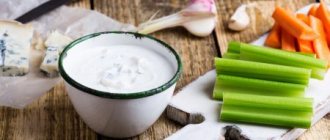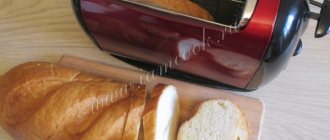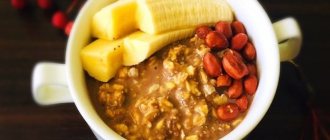When and how did kefir appear?
Kefir is a fermented milk drink fermented with the help of so-called “kefir grains.”
This starter is a symbiotic colony of bacteria and yeast, which includes thermophilic streptococcus, lactic and acetic acid bacteria, yeast, etc. The North Caucasus is considered the birthplace of kefir. The mountaineers living in those places, Ossetians and Karachais, had a special leaven that turns milk into a thick fermented milk drink. They valued sourdough and considered it a divine gift, and therefore never gave it to anyone or sold it. The problem was solved this way: the owner of the sourdough allowed it to be stolen by someone who really wanted it, and then took money, but not for fungi, but for some other, purely symbolic product. Even girls who got married received sourdough as a dowry for a reason: they stole it from their parents, and the scenario of this “ritual theft” was worked out to the smallest detail.
Until the beginning of the 20th century, kefir was not prepared in Central Russia - only occasionally the drink was imported from the Caucasus and sold at a very high price. Kefir grains appeared in Moscow only in 1908, and then only thanks to a happy accident. A Moscow dairy factory worker, Irina Sakharova, who came to the Caucasus to buy kefir grains, was kidnapped by a wealthy supplier of dairy products from Kislovodsk, Prince Baicharov. Having failed to win her hand, he was brought to court and was able to pay off with only ten pounds of kefir grains. A few weeks after the trial, patients at the Botkin Hospital were able to try kefir.
What does kefir do to the body?
Photo: envato.com
In its consistency, kefir resembles drinking yogurt. It belongs to the family of milk drinks that are made through fermentation.
Kefir is a pure source of calcium, vitamins B2, B12, D, and protein. Thanks to the high content of enzymes and probiotic bacteria, it helps digestive processes. Some types of kefir contain more probiotic bacteria per serving than yogurt.
How is kefir made?
Kefir grains look like cooked rice or small cauliflower florets. When a small amount of such grains is added to milk and left at room temperature for several days, interesting processes begin to occur: lactic acid bacteria destroy milk protein and form lactic acid , yeast convert milk sugar lactose into ethyl alcohol , which prevents the development of foreign microorganisms, and acetic acid bacteria produce acetic acid .
It is interesting that modern scientists have still not been able to completely “decipher” the formula of kefir grains: in addition to the well-known microorganisms, bacteria and yeast, new ones are constantly joining the living culture. That is why they have not yet learned how to make kefir artificially, and in different parts of the country the taste of kefir can differ significantly due to the local microflora - somewhere it is sour, somewhere thicker, and somewhere sweeter.
Fermented milk fungi that turn milk into kefir
When is the best time to drink
Kefir is one of those products that can be used at any time of the day without harm to health.
For the night
If you drink kefir in the evening, you can get rid of the feeling of hunger while consuming a minimum of calories. This way, you will follow your diet and not suffer from the desire to eat something filling at night.
In addition, calcium, which is contained in large quantities in kefir drink, is best absorbed during sleep.
For breakfast
If you drink kefir in the morning on an empty stomach, you help your stomach get into a working mood. After such a meal, you will not only not feel heavy, but will also provide the gastrointestinal tract with the necessary bacteria. Thanks to the protein that this fermented milk product contains, you will be alert and feel a surge of energy.
Many people prefer to add sugar or salt to sour milk to make its taste more interesting. This combination will not harm, but will not add any beneficial properties to the drink. Personally, I recommend using fresh fruit or bee honey in such cases.
The benefits of kefir
Thanks to its “live” composition - colony-forming units (CFU), kefir has a beneficial effect on the intestinal microflora: just a few glasses of this drink a day are enough to prevent the development of intestinal infections and dysbiosis caused by diseases and taking antibiotics.
Kefir contains many useful substances:
- milk proteins,
- fatty acids,
- calcium,
- phosphorus,
- B vitamins (especially B12, which can be supplied to the body exclusively through food),
- potassium,
- calcium,
- zinc,
- chromium.
Kefir helps strengthen the immune system, relieves chronic fatigue, is indispensable for sleep disorders and diseases of the nervous system, and quenches thirst well on hot summer days.
Important: fresh kefir that is one or two days old has a laxative effect, while kefir that is three days old and older has a strengthening effect.
Is it possible to drink kefir at night?
The optimal scheme for using kefir by an athlete looks like this:
- 200 ml 30-60 minutes before training;
- 200-400 ml after sports;
- 200 ml immediately before bedtime.
This is where the main difference between kefir and milk lies. It takes time for the latter to be absorbed. Therefore, you can drink milk no less than 2 hours before bedtime. But the active lactobacilli in kefir do not limit the athlete: the drink can be consumed even while lying in bed, and the digestive tract will only thank you for this.
While you sleep, lactic acid bacteria will gently cleanse your intestines of waste and toxins. And if you make a glass of kefir at night a habit, within a week you will notice that your stool has returned to normal, your skin has become clearer, and your abdominal volume has decreased by a couple of centimeters. And calcium is absorbed better by our body at night, when the body is resting.
When first reporting complaints of insomnia, competent neurologists are in no hurry to prescribe sleeping pills and antidepressants to their patients, but advise drinking a glass of kefir at night. This product contains several elements that calm the nervous system: magnesium, potassium, vitamins A, C, B1 and B12.
Harm of kefir
Firstly, kefir is an alcohol-containing product, unlike other lactic acid drinks, fermented baked milk and yogurt: the amount of alcohol can range from 0.05% to 1%. Of course, this cannot affect your ability to drive, but if for some reason you cannot drink alcohol, kefir should be excluded from your diet.
Secondly, kefir should be consumed with caution by people with gastrointestinal problems: gastritis, pancreatitis, stomach and duodenal ulcers. Also, people with heart and vascular diseases should not drink a lot of kefir due to the high content of milk proteins and fats.
By the way, many nutritionists do not recommend going on a kefir diet due to its high fat content. On the other hand, low-fat kefir is a pointless product, because... all the beneficial substances contained in it are not absorbed without the presence of fats.
Calorie content of Kefir. Chemical composition and nutritional value.
Nutritional value and chemical composition of “Kefir”.
The table shows the nutritional content (calories, proteins, fats, carbohydrates, vitamins and minerals) per 100 grams of edible portion.
| Nutrient | Quantity | Norm** | % of the norm in 100 g | % of the norm in 100 kcal | 100% normal |
| Calorie content | 41 kcal | 1684 kcal | 2.4% | 5.9% | 4107 g |
| Squirrels | 3.6 g | 76 g | 4.7% | 11.5% | 2111 g |
| Fats | 1.5 g | 56 g | 2.7% | 6.6% | 3733 g |
| Carbohydrates | 3.6 g | 219 g | 1.6% | 3.9% | 6083 g |
| Alcohol (ethyl alcohol) | 0.03 g | ~ | |||
| Organic acids | 0.9 g | ~ | |||
| Water | 90.4 g | 2273 g | 4% | 9.8% | 2514 g |
| Ash | 0.7 g | ~ | |||
| Vitamins | |||||
| Vitamin B1, thiamine | 0.04 mg | 1.5 mg | 2.7% | 6.6% | 3750 g |
| Vitamin B2, riboflavin | 0.17 mg | 1.8 mg | 9.4% | 22.9% | 1059 g |
| Vitamin B4, choline | 15.8 mg | 500 mg | 3.2% | 7.8% | 3165 g |
| Vitamin B5, pantothenic | 0.2 mg | 5 mg | 4% | 9.8% | 2500 g |
| Vitamin B6, pyridoxine | 0.025 mg | 2 mg | 1.3% | 3.2% | 8000 g |
| Vitamin B9, folates | 3 mcg | 400 mcg | 0.8% | 2% | 13333 g |
| Vitamin B12, cobalamin | 0.2 mcg | 3 mcg | 6.7% | 16.3% | 1500 g |
| Vitamin C, ascorbic acid | 0.7 mg | 90 mg | 0.8% | 2% | 12857 g |
| Vitamin D, calciferol | 0.012 mcg | 10 mcg | 0.1% | 0.2% | 83333 g |
| Vitamin H, biotin | 3.2 mcg | 50 mcg | 6.4% | 15.6% | 1563 g |
| Vitamin RR, NE | 0.9 mg | 20 mg | 4.5% | 11% | 2222 g |
| Niacin | 0.1 mg | ~ | |||
| Macronutrients | |||||
| Potassium, K | 146 mg | 2500 mg | 5.8% | 14.1% | 1712 g |
| Calcium, Ca | 120 mg | 1000 mg | 12% | 29.3% | 833 g |
| Magnesium, Mg | 14 mg | 400 mg | 3.5% | 8.5% | 2857 g |
| Sodium, Na | 50 mg | 1300 mg | 3.8% | 9.3% | 2600 g |
| Sera, S | 30 mg | 1000 mg | 3% | 7.3% | 3333 g |
| Phosphorus, P | 90 mg | 800 mg | 11.3% | 27.6% | 889 g |
| Chlorine, Cl | 100 mg | 2300 mg | 4.3% | 10.5% | 2300 g |
| Microelements | |||||
| Aluminium, Al | 50 mcg | ~ | |||
| Iron, Fe | 0.1 mg | 18 mg | 0.6% | 1.5% | 18000 g |
| Yod, I | 9 mcg | 150 mcg | 6% | 14.6% | 1667 g |
| Cobalt, Co | 0.9 mcg | 10 mcg | 9% | 22% | 1111 g |
| Manganese, Mn | 0.005 mg | 2 mg | 0.3% | 0.7% | 40000 g |
| Copper, Cu | 12 mcg | 1000 mcg | 1.2% | 2.9% | 8333 g |
| Molybdenum, Mo | 5 mcg | 70 mcg | 7.1% | 17.3% | 1400 g |
| Tin, Sn | 15 mcg | ~ | |||
| Selenium, Se | 1 mcg | 55 mcg | 1.8% | 4.4% | 5500 g |
| Strontium, Sr | 17 mcg | ~ | |||
| Fluorine, F | 20 mcg | 4000 mcg | 0.5% | 1.2% | 20000 g |
| Chromium, Cr | 2 mcg | 50 mcg | 4% | 9.8% | 2500 g |
| Zinc, Zn | 0.4 mg | 12 mg | 3.3% | 8% | 3000 g |
| Digestible carbohydrates | |||||
| Mono- and disaccharides (sugars) | 4 g | max 100 g | |||
| Sterols (sterols) | |||||
| Cholesterol | 3 mg | max 300 mg | |||
| Saturated fatty acids | |||||
| Saturated fatty acids | 0.7 g | max 18.7 g | |||
| Monounsaturated fatty acids | 0.3 g | min 16.8 g | 1.8% | 4.4% | |
| Polyunsaturated fatty acids | 0.048 g | from 11.2 to 20.6 g | 0.4% | 1% | |
| Omega-3 fatty acids | 0.01 g | from 0.9 to 3.7 g | 1.1% | 2.7% | |
| Omega-6 fatty acids | 0.03 g | from 4.7 to 16.8 g | 0.6% | 1.5% |
The energy value of Kefir is 41 kcal.
Primary Source: Created in the application by the user. Read more.
** This table shows the average levels of vitamins and minerals for an adult. If you want to know the norms taking into account your gender, age and other factors, then use the “My Healthy Diet” application.
How to make kefir?
Real kefir contains only milk (can be a mixture of whole, skim and dry) and a starter made from kefir grains. Kefir can be made at home by adding a few tablespoons of store-bought kefir to pasteurized or boiled milk (it will be ready within a day). If you become the happy owner of a kefir grain starter, then a small amount of it can turn milk into kefir in 3-4 days (3 tablespoons per 1 liter). Then the kefir needs to be strained, and the fungi can be reused. When the kefir grain is "resting" and not eating milk, it must be washed every day, otherwise it will get sick.
Kefir is rarely subjected to heat treatment. However, you can prepare some dishes with it: for example, season it with salad, muesli or okroshka. Kefir is also used to ferment dough, in particular, pancake dough.
Kefir-buckwheat diet
The diet lasts a week. The expected result is minus 5 kilograms. The advantage of this diet is that you hardly have to cook. All you need is to stock up on kefir with a fat content of no more than 1% and boil or steam the buckwheat. As you can see, everything is quite easy to do and on a budget.
If this diet seems too meager to you, you can diversify it with dried fruits, honey, vegetable oil and natural yogurt. Just without fanaticism.
As part of this diet, kefir can be drunk half an hour before or half an hour after meals. And also pour buckwheat into it. In addition, it is recommended to drink enough plain water and not eat food later than 4 hours before bedtime.
How to choose and store kefir
It is best to choose kefir that is as fresh as possible, with a short shelf life, produced in your region. It is believed that on the third day the beneficial microorganisms in kefir die and it becomes useless. But yeast fungi still continue to multiply in it - they eat sugar and produce alcohol and gas - this can cause a bottle of kefir, left for several hours at room temperature, to inflate. And in the heat it could even explode!
Therefore, kefir can only be stored in the refrigerator . We drink it for three days and then add it to the dough for pancakes and pancakes.
Beneficial features
Most of us know kefir as a drink that helps keep us in good shape. It is light but nutritious. It is easy for them to suppress hunger and improve metabolism.
In addition, among its healing characteristics are:
- positive effect on the intestines due to the presence of beneficial microorganisms;
- help with bloating;
- supplying our body with protein;
- strengthening bone tissue and nails due to high calcium content;
- resistance to stomach infections;
- acceleration of metabolism and removal of toxins and waste from the body;
- help in dealing with stress;
- fight against insomnia;
- normalization of heart function;
- maintaining vision due to vitamin A content;
- improvement of skin condition;
- diuretic properties;
- reducing the risk of fatty liver;
- normalization of digestion in elderly people.
Properties of fermented milk products for constipation
Among the products recommended for a healthy diet, fermented milk drinks occupy a special place. They are rich in vitamins, minerals and beneficial bacteria. Regular consumption of fresh kefir, fermented baked milk, and yogurt is an excellent prevention of problems with bowel movements.
Why are they useful?
Fermented milk products contain bifidobacteria and lactobacilli, which help normalize the microflora of the gastrointestinal tract.
Biokefir contains an additional complex of substances that help digestion. Microorganisms found in fermented milk products not only activate intestinal motility, but also suppress pathogenic bacteria, preventing fermentation and rotting from occurring. Kefir contains natural antibiotics that help destroy pathogens of dangerous diseases such as tuberculosis and typhoid.
Fermented milk products help normalize the microflora of the gastrointestinal tract.
Fermented milk products contain vitamins A, PP, C, as well as the B complex. They contain protein, which is easily absorbed by the body.
The refreshing taste of kefir whets your appetite. Even I. Mechnikov at the end of the 19th century, having conducted extensive research, called the use of the drink a valuable element in preserving human health.
Why are they harmful?
Kefir has a harmful effect on those who have increased secretion of gastric juice, have an ulcer or hyperacid gastritis.
People with pancreatitis should also stop eating fermented milk products. People suffering from constipation should not drink a three-day drink, because... it will help firm the stool rather than soften it.
Individual lactose intolerance is also a contraindication.
Product a la kefir
Unfortunately, recently many products a la kefir have appeared on our shelves. It is made not with live sourdough, but with the help of dried bacteria: they take the powder and pour it into pasteurized milk. The result is a drink that tastes very much like kefir, but in essence is completely different from it. According to the law, it does not have the right to be called kefir, so it is most often called “kefir product”, “kefir”, “kefir ...” and so on. To pass off your product as valuable fermented milk, use capital letters, and add the ending “ny” or “naya” in small print. In addition, there will be no quantitative indicators of microorganisms and yeast on the packaging of a “dead” dairy product and there will be no starter in the composition. And part of the milk in the “non-live” version can be replaced with vegetable palm fat. Such kefir drinks, although safe for health, will not bring benefits to the body.










